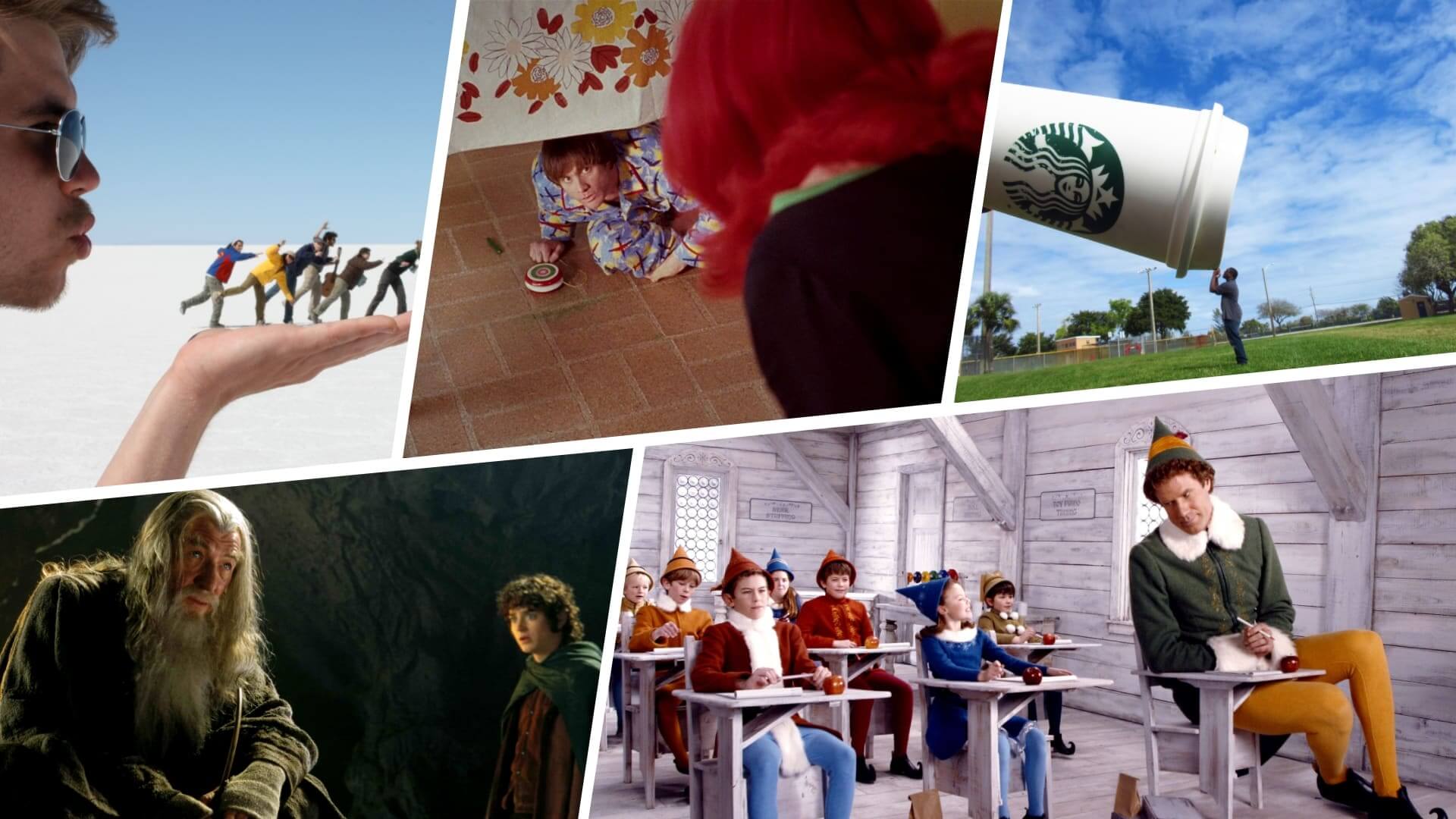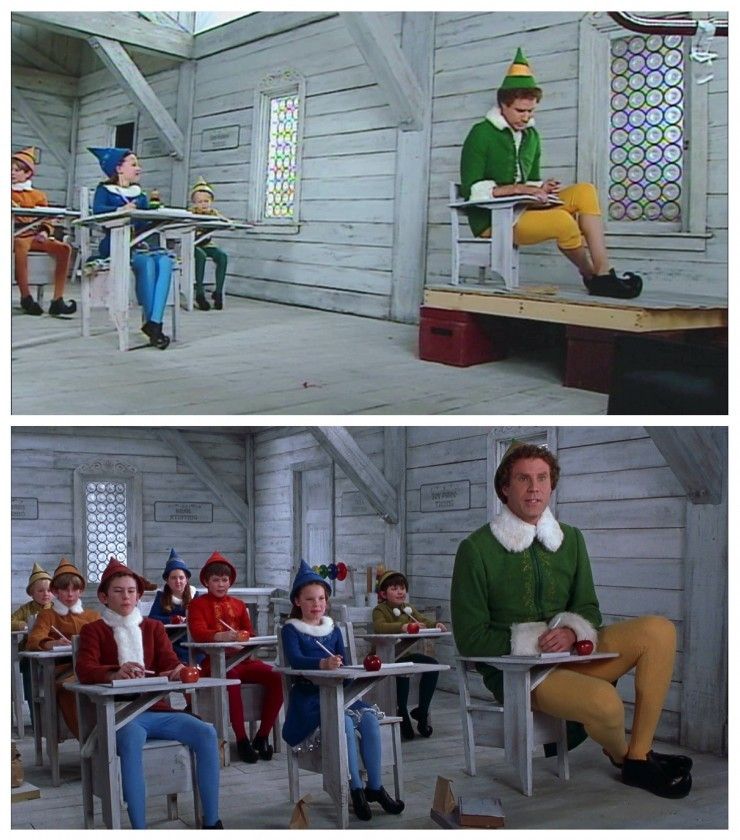There’s something magical about the holiday season, and the 2003 film "Elf" has become a timeless classic that brings joy to millions every December. But what happens when you take a closer look at how this whimsical world was created? Behind the scenes of "Elf," filmmakers utilized a clever technique known as "forced perspective" to bring Buddy the Elf's oversized world to life. This article dives deep into the production secrets, exploring how forced perspective was used to create the illusion of scale, making Buddy appear comically out of proportion compared to his surroundings. If you’ve ever wondered how Buddy’s oversized cereal bowls or tiny co-workers were achieved, this is your chance to uncover the magic!
The magic of "Elf" lies not just in its humor and heartwarming story but also in its technical brilliance. Forced perspective is a filmmaking technique that manipulates visual perception to create the illusion of size and distance. In "Elf," this technique was employed extensively to make Buddy, played by Will Ferrell, appear much larger than his surroundings. From the miniature sets to carefully positioned cameras, every detail was meticulously crafted to enhance the comedic effect. Understanding how these techniques work can give fans a new appreciation for the film’s visual storytelling.
Forced perspective isn’t just a trick reserved for holiday movies—it’s an art form that has been used in cinema for decades. However, its application in "Elf" is particularly noteworthy because it aligns perfectly with the film’s whimsical tone. By examining the behind-the-scenes process, we gain insight into the creativity and ingenuity of the filmmakers who brought Buddy’s world to life. Whether you’re a die-hard fan or simply curious about the technical aspects of filmmaking, this article will provide you with fascinating insights into the magic of "Elf."
Read also:Dookie Demastered A Fresh Take On Green Days Iconic Album
What Exactly is Forced Perspective?
Forced perspective is a visual illusion technique that plays with our perception of size and distance. It involves manipulating the position of objects relative to the camera to create the appearance of different scales. This technique has been used in films for decades, from the grandeur of "The Lord of the Rings" to the comedic brilliance of "Elf." In "Elf," forced perspective was used to make Buddy seem much larger than the people and objects around him, enhancing the film’s humor and visual appeal.
One of the most memorable scenes where forced perspective was employed is when Buddy eats his breakfast. The oversized cereal bowl and spoon were actually miniature props placed far from the camera, while Will Ferrell was positioned closer. This created the illusion that he was eating from a bowl much larger than life. Similarly, the tiny elf co-workers were achieved by placing actors farther away from the camera, making them appear smaller in relation to Buddy.
How Did They Create the Elf Behind the Scenes Forced Perspective?
The filmmakers behind "Elf" employed a variety of techniques to achieve the forced perspective effects seen throughout the movie. One of the key elements was the use of miniature sets. These sets were carefully designed to appear life-sized when viewed through the camera lens, but in reality, they were much smaller. By positioning the camera at specific angles and distances, the illusion of scale was created.
In addition to miniature sets, the filmmakers also used carefully positioned actors and props. For example, in scenes where Buddy interacts with other elves, the actors playing the smaller elves were often placed farther away from the camera. This created the illusion that they were much smaller than Buddy, even though they were of average height. The combination of these techniques resulted in a visually stunning and comedic effect that has become one of the hallmarks of "Elf."
Why Was Forced Perspective Used in Elf Behind the Scenes?
Why did the filmmakers choose to use forced perspective in "Elf"? The answer lies in the film’s unique premise. Buddy, the main character, is a human who was raised by elves in the North Pole. When he discovers he is not an elf, he embarks on a journey to New York City, where he encounters a world that seems much smaller than what he is used to. Forced perspective was used to visually emphasize this difference in scale, making Buddy appear much larger than the people and objects around him.
This technique not only enhanced the comedic aspects of the film but also helped to convey the story’s central theme of belonging. By making Buddy appear out of proportion to his surroundings, the filmmakers were able to highlight his feelings of being different and out of place. It’s a subtle yet powerful way of using visual effects to enhance storytelling.
Read also:How Old Is Doechii Unveiling The Age Of The Rising Star
Who Were the Key Players in Creating the Magic?
Behind every great film is a team of talented individuals who bring the vision to life. For "Elf," this team included director Jon Favreau, producer Robert Simonds, and production designer William Sandell. Each played a crucial role in creating the film’s unique look and feel. Jon Favreau, known for his innovative approach to filmmaking, was instrumental in bringing the concept of forced perspective to life. His vision and direction were key to ensuring that the technique was used effectively throughout the movie.
William Sandell, the production designer, was responsible for designing the miniature sets and props used in the forced perspective scenes. His attention to detail and creative problem-solving were essential in creating the illusion of scale. Together with the rest of the production team, Sandell ensured that every scene was meticulously crafted to enhance the film’s visual storytelling.
What Challenges Did the Filmmakers Face?
Creating the forced perspective effects seen in "Elf" was not without its challenges. One of the biggest hurdles was ensuring that the illusion of scale was consistent throughout the film. This required precise planning and execution, as any inconsistency could break the illusion and disrupt the audience’s experience. The filmmakers had to carefully coordinate the positioning of actors, props, and cameras to maintain the illusion of size and distance.
Another challenge was working with miniature sets and props. These had to be designed and constructed with precision to appear life-sized on camera. Any flaw or imperfection could ruin the illusion, so the production team had to be meticulous in their work. Despite these challenges, the filmmakers successfully created a visually stunning and comedic masterpiece that continues to delight audiences to this day.
How Did They Overcome These Challenges?
To overcome the challenges of creating forced perspective effects, the filmmakers employed a combination of technical expertise and creative problem-solving. They conducted extensive pre-production planning, mapping out every scene in detail to ensure consistency. This involved creating detailed storyboards and conducting numerous tests to perfect the technique.
They also worked closely with special effects artists and cinematographers to refine the technique and ensure that it was used effectively. By collaborating with experts in their fields, the filmmakers were able to overcome the challenges and create a film that stands the test of time. The result is a visually stunning and comedic masterpiece that continues to enchant audiences year after year.
Can You Replicate the Elf Behind the Scenes Forced Perspective at Home?
While replicating the forced perspective effects seen in "Elf" may seem daunting, it’s actually something that can be achieved with a bit of creativity and some basic equipment. All you need is a camera, a few props, and a good understanding of how forced perspective works. By positioning objects at different distances from the camera, you can create the illusion of size and distance, just like the filmmakers did in "Elf."
- Start by choosing a simple scene, such as a person interacting with a miniature object.
- Position the person closer to the camera and the object farther away.
- Experiment with different angles and distances to achieve the desired effect.
- Use lighting and composition to enhance the illusion.
What Are Some Other Films That Use Forced Perspective?
Forced perspective is a technique that has been used in many films across various genres. Some notable examples include "The Lord of the Rings" trilogy, where it was used to make the hobbits appear smaller than the human characters, and "Inception," where it was used to create the illusion of gravity-defying architecture. In "Amélie," forced perspective was used to create the whimsical world of the titular character, while in "Pirates of the Caribbean," it was used to make ships appear larger than life.
These films demonstrate the versatility and power of forced perspective in enhancing visual storytelling. By manipulating our perception of size and distance, filmmakers can create worlds that are both fantastical and believable. Whether used for comedy, drama, or action, forced perspective remains a valuable tool in the filmmaker’s arsenal.
How Has Forced Perspective Evolved Over Time?
Forced perspective has evolved significantly over the years, thanks to advancements in technology and filmmaking techniques. In the early days of cinema, forced perspective was achieved using simple techniques such as positioning objects at different distances from the camera. As technology advanced, filmmakers began using more sophisticated methods, such as digital effects and motion control cameras.
Today, forced perspective is often combined with other techniques, such as CGI, to create even more impressive effects. Despite these advancements, the basic principles of forced perspective remain the same: manipulating our perception of size and distance to create visual illusions. Whether used alone or in combination with other techniques, forced perspective continues to be a powerful tool for filmmakers looking to bring their visions to life.
Conclusion: The Magic of Elf Behind the Scenes Forced Perspective
The magic of "Elf" lies not just in its humor and heartwarming story but also in its technical brilliance. By employing the technique of forced perspective, the filmmakers were able to create a world where Buddy the Elf stands out as a larger-than-life character. This technique not only enhances the comedic aspects of the film but also helps to convey its central theme of belonging. Through careful planning and execution, the filmmakers successfully brought Buddy’s oversized world to life, creating a film that continues to enchant audiences year after year.
Why Is Understanding Forced Perspective Important?
Understanding forced perspective is important for anyone interested in filmmaking or visual storytelling. It provides insight into how filmmakers manipulate our perception of size and distance to create visual illusions. Whether you’re a filmmaker looking to enhance your craft or simply a fan of movies like "Elf," understanding forced perspective can deepen your appreciation for the art of filmmaking.
What Can We Learn From Elf Behind the Scenes Forced Perspective?
From "Elf," we learn that creativity and ingenuity are key to successful filmmaking. The use of forced perspective in "Elf" demonstrates how technical skills and artistic vision can come together to create something truly magical. It also highlights the importance of collaboration and attention to detail in bringing a film to life. By studying the techniques used in "Elf," we can gain valuable insights into the art of visual storytelling and the power of illusion in cinema.
Table of Contents
- What Exactly is Forced Perspective?
- How Did They Create the Elf Behind the Scenes Forced Perspective?
- Why Was Forced Perspective Used in Elf Behind the Scenes?
- Who Were the Key Players in Creating the Magic?
- What Challenges Did the Filmmakers Face?
- How Did They Overcome These Challenges?
- Can You Replicate the Elf Behind the Scenes Forced Perspective at Home?
- What Are Some Other Films That Use Forced Perspective?
- How Has Forced Perspective Evolved Over Time?
- Why Is Understanding Forced Perspective Important?


